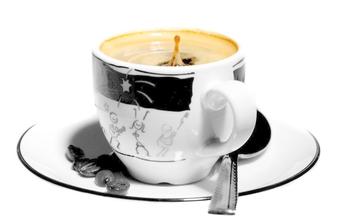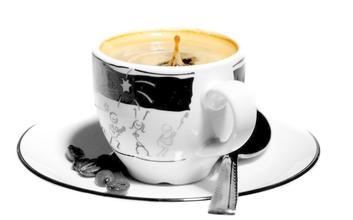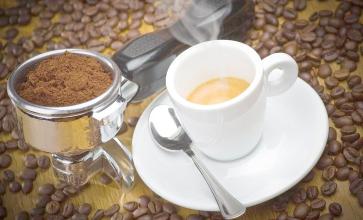Fragrant and mild Salvadoran Coffee Flavor Taste introduction of boutique coffee beans in manor production area
El Salvador's economy is dominated by agriculture and has a weak industrial base. Economy since 1992
Liberalization and reform, inflation has been curbed, and the economy has developed rapidly. From 1990 to 1997, the economy grew at an average annual rate of 5.3 percent. Since 2001, the policy of dollarization of the economy has been implemented, allowing the legal circulation of the US dollar, fixing the exchange rate between the local currency and the US dollar, and maintaining overall macroeconomic stability. In 2010, imports amounted to $8.189 billion and external debt to $11.07 billion. GDP in 2011 was $22.6 billion, up 1.3 per cent from 2010, GDP per capita was $3722, unemployment rate 7 per cent and inflation rate 5.1 per cent. [7-8]
Agriculture is the mainstay of El Salvador's national economy. In 2003, 43.2 per cent of the country's population was engaged in agricultural production, with 2,104,000 hectares of arable land and 80 per cent of agricultural products for export. In 1997, agricultural output was estimated at 12,678 million colones, or 13 per cent of GDP for that year, while in 1998 it grew by 0.2 per cent and in 1999 by 6.9 per cent. In 2011, the agricultural labour force accounted for 21 per cent of the country's total labour force and agricultural GDP was approximately $2.42 billion, or 10.5 per cent of GDP. By 2015, the country's sugar industry will contribute 2.5% of GDP and $200 million in export revenue annually. [8-9]
El Salvador's main industrial sectors include food processing, textiles, garment making, cigarettes, sugar, cement, oil refining and automobile assembly. In 2011, the country's industrial power generation capacity was 5.728 billion kWh, electricity exports were 101.6 billion kWh, and the annual industrial production growth rate was 1.8%.
In 2011, El Salvador's GDP in services was $13.49 billion, accounting for 59.7 per cent of GDP; services employed 1496980 people, accounting for 58 per cent of the country's total workforce
El Salvador is tied with Mexico and Guatemala as the producer of Asa and Meldo, and is competing with other countries for the top one or two places in Central America. Highland origin, for the size of large coffee beans, fragrant taste mild. As in Guatemala and Costa Rica, coffee in El Salvador is graded according to altitude, with the higher the altitude, the better the coffee. There are three grades according to altitude: SHB (strictlyhighgrown)= highland, HEC (highgrowncentral)= medium high, CS (central standard)= lowland; The best brand is Pipil, which is Aztec--Mayan.(Aztec-Mayan) The term for coffee, which has been endorsed by the Organic Certified Institute of America, was used in the early 1990s when guerrilla warfare wreaked havoc on the country's national economy, reducing coffee production from 3.5 million bags in the early 1970s to 2.5 million bags in 1990 - 91. The eastern part of the country was most affected by guerrilla warfare, and many farmers and workers were forced to leave their estates. The shortage of funds has caused coffee production to plummet, from 1200 kilograms per hectare in the past to less than 900 kilograms per hectare today.
In addition, in 1986 the Government imposed an additional 15 per cent duty on coffee exports, i.e. 15 per cent on top of the existing 30 per cent tax. Taxes, combined with unfavourable exchange rates, have severely reduced coffee exports and, with them, quality. Salvadoran coffee is a specialty of Central America, where it is light, aromatic, pure and slightly sour. Like Guatemala and Costa Rica, coffee in El Salvador is graded according to altitude, with the higher the altitude, the better the coffee. The best brand is Pipil, the Aztec Mayan name for coffee, which has been approved by the Organic Certified Institute of America. Another rare coffee is Pacamara, a hybrid of Pacas and Maragogype. The coffee is best grown in western El Salvador, adjacent to Santa Ana, near the border with Guatemala. Pakmara coffee grains are full, when the aroma is not too strong

Important Notice :
前街咖啡 FrontStreet Coffee has moved to new addredd:
FrontStreet Coffee Address: 315,Donghua East Road,GuangZhou
Tel:020 38364473
- Prev

Refreshing and elegant taste of Cuban Crystal Coffee introduction to the characteristics of Fine Coffee in Manor
In addition to Cuba, it also includes more than 1600 surrounding islands of different sizes. The islands are made up of five islands: Savannah, Camag ü ey, Colorados, Queen's Garden and Canareos. Youth Island (also known as Pine Island), located in Batahuano Bay, is the only larger island along the coast. The total length of the coastline is 6073 kilometers. Most of the island of Cuba is flat
- Next

Taste characteristics of Nicaraguan coffee with mellow flavor introduction to boutique coffee in manor producing area
Sandino National Liberation Front: the ruling party. Established on July 23, 1961, mainly composed of workers, farmers and intellectuals, it waged a long armed struggle to overthrow the military dictatorship of Somoza. He was in power from July 1979 to April 1990. He won the general election in November 2006 and returned to power after 16 years of loss of power. Won again in the general election in November 2011 and remained in power. Total
Related
- Detailed explanation of Jadeite planting Land in Panamanian Jadeite Manor introduction to the grading system of Jadeite competitive bidding, Red bid, Green bid and Rose Summer
- Story of Coffee planting in Brenka region of Costa Rica Stonehenge Manor anaerobic heavy honey treatment of flavor mouth
- What's on the barrel of Blue Mountain Coffee beans?
- Can American coffee also pull flowers? How to use hot American style to pull out a good-looking pattern?
- Can you make a cold extract with coffee beans? What is the right proportion for cold-extracted coffee formula?
- Indonesian PWN Gold Mandrine Coffee Origin Features Flavor How to Chong? Mandolin coffee is American.
- A brief introduction to the flavor characteristics of Brazilian yellow bourbon coffee beans
- What is the effect of different water quality on the flavor of cold-extracted coffee? What kind of water is best for brewing coffee?
- Why do you think of Rose Summer whenever you mention Panamanian coffee?
- Introduction to the characteristics of authentic blue mountain coffee bean producing areas? What is the CIB Coffee Authority in Jamaica?

